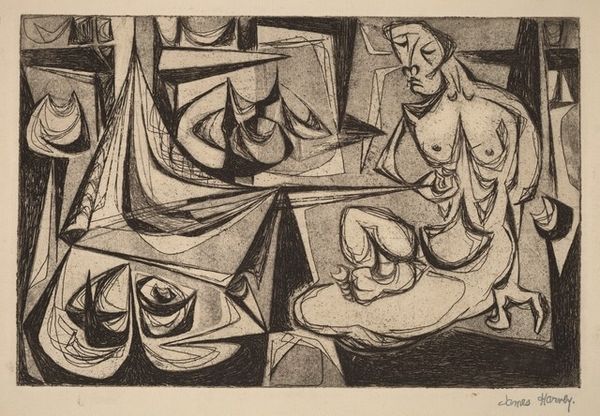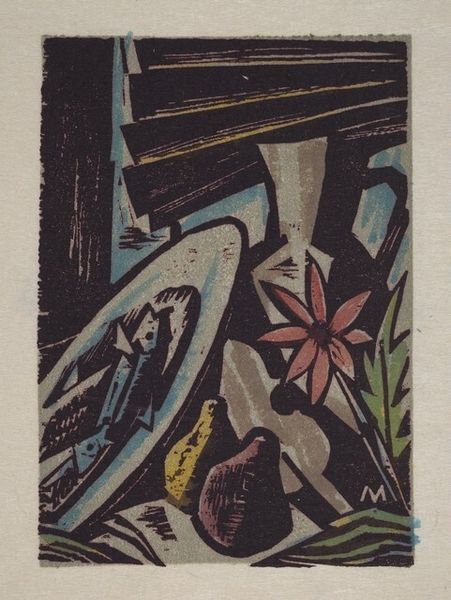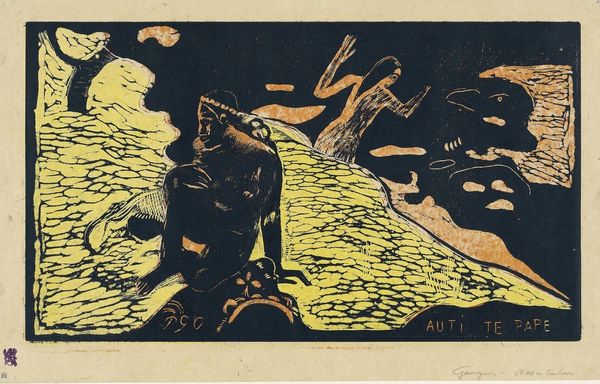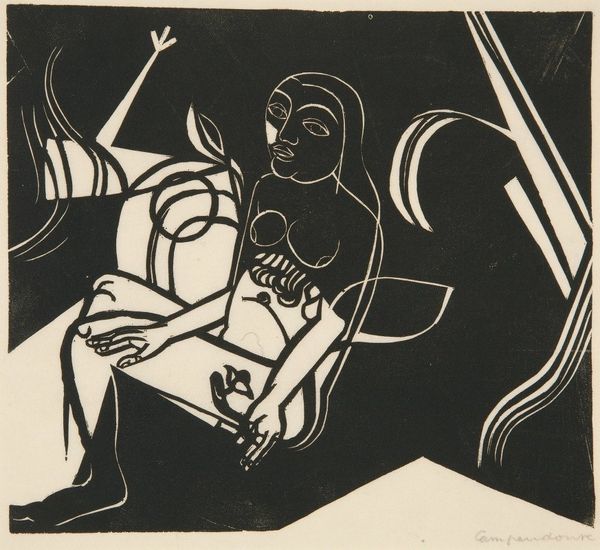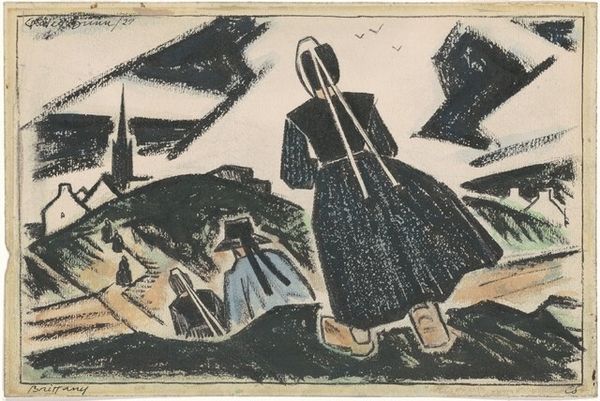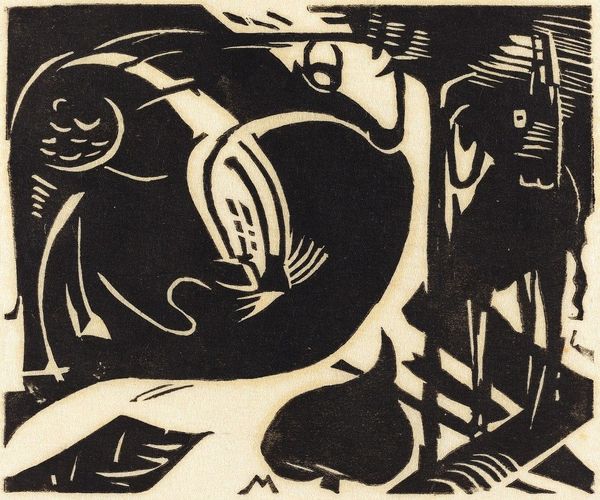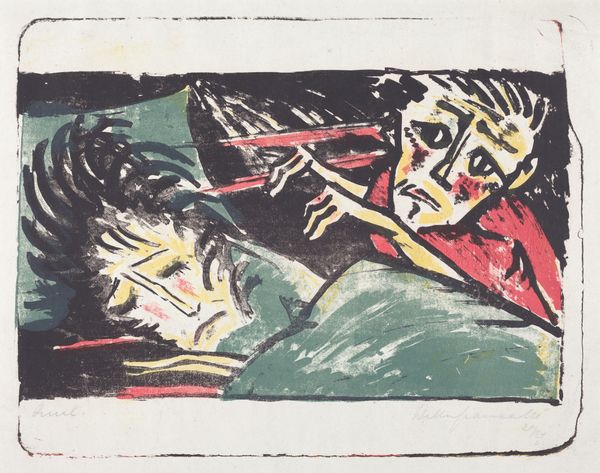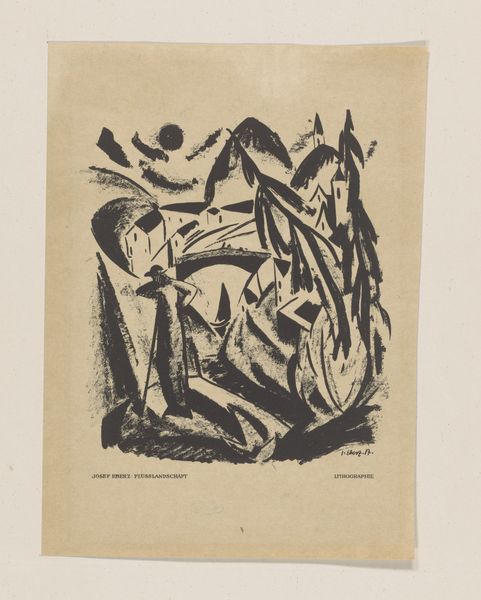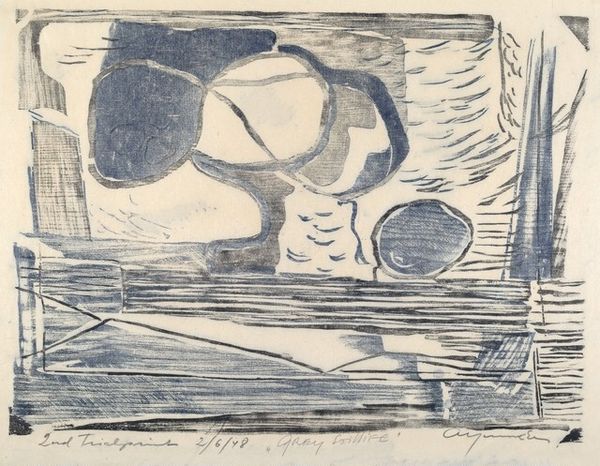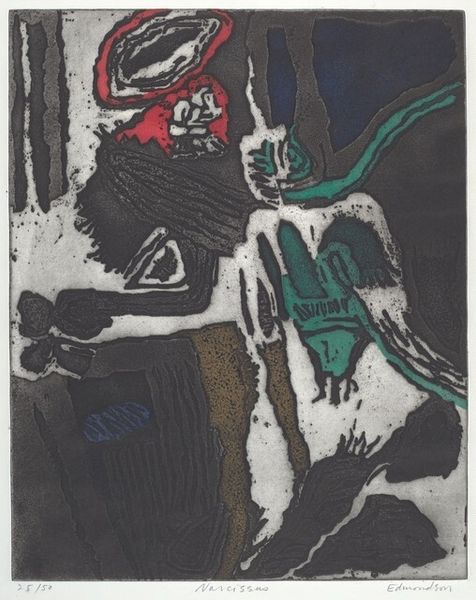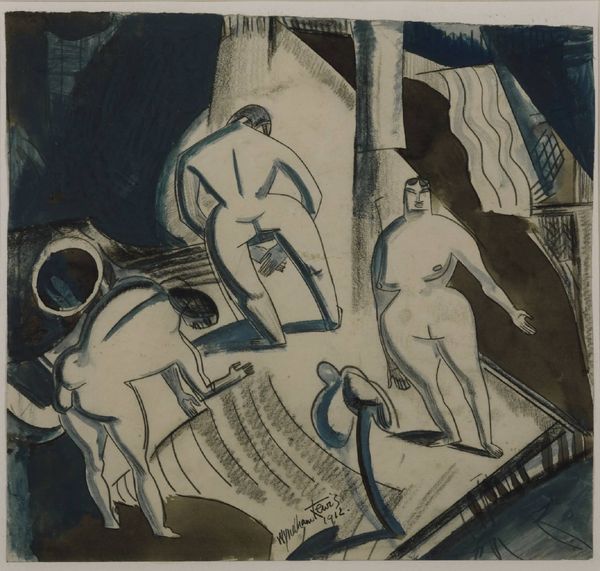
Copyright: National Gallery of Art: CC0 1.0
Editor: This woodcut print, "New Year's Card," was created by Hans Alexander Mueller in 1953. It strikes me as a rather unconventional New Year's greeting. It has an almost unsettling mood with these skewed angles and muted colors. What symbols or underlying cultural messages do you see in this seemingly simple still life? Curator: I'm drawn to how the distorted perspective and unusual color palette defy the traditional celebratory associations of a New Year's card. Look at the jagged edges and the almost aggressive angles. Does this invoke a sense of unease within you, or perhaps hint at societal anxieties prevalent in the post-war era? Editor: It definitely feels unsettling. I'm also intrigued by how the artist employs geometric abstraction to distort the familiar still-life composition. The pitcher and the fruits almost seem to be collapsing, while the artist uses symbols to subvert a happy "new beginnings" theme that we find with a new year. Curator: Exactly! The geometric forms could symbolize a fractured world, a rebuilding after devastation. Also, note how Mueller has created light within this darkness, as newness bursting through hardship. The card challenges our understanding and asks whether “new beginnings” can only start after some symbolic disruption. Consider, how else does Mueller weave symbolic depth with seemingly ordinary forms and composition? Editor: It's thought-provoking to see the darker side of celebrating a New Year and how Mueller has woven themes of cultural anxiety and resilience within a deceptively simple print. Curator: Indeed. And that subversion of expectation, that's the essence of impactful iconography. This exploration gives the woodcut greater meaning beyond just being an item printed for new year. It’s a way of continuing conversations around societal anxieties through visual cues.
Comments
No comments
Be the first to comment and join the conversation on the ultimate creative platform.
